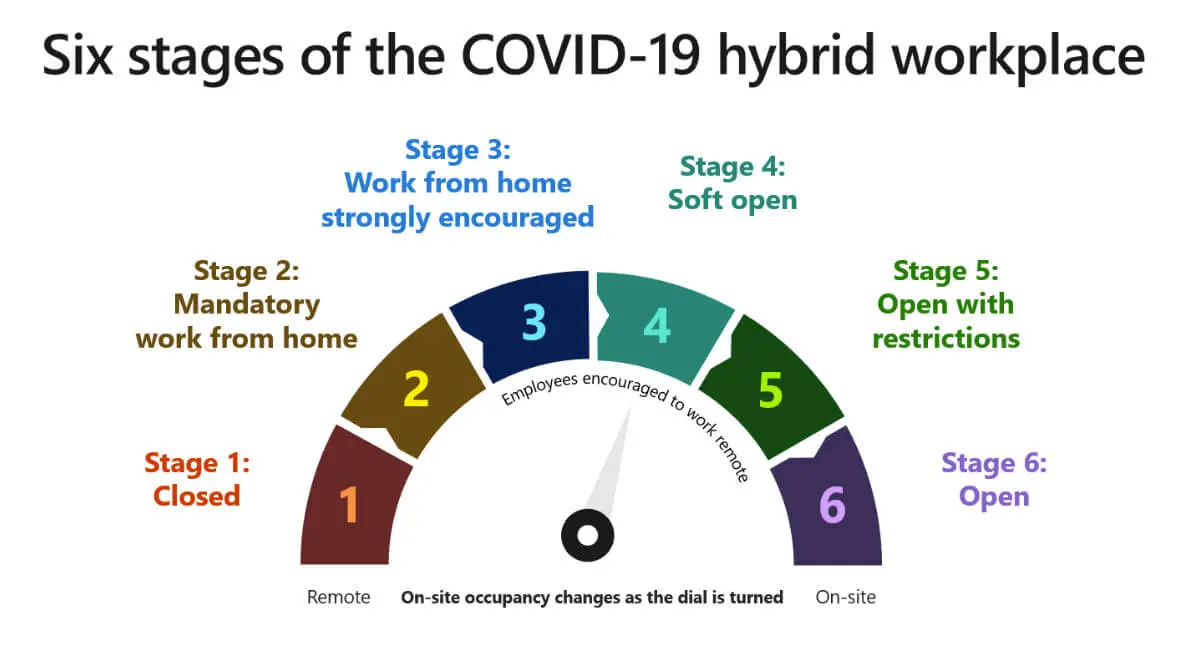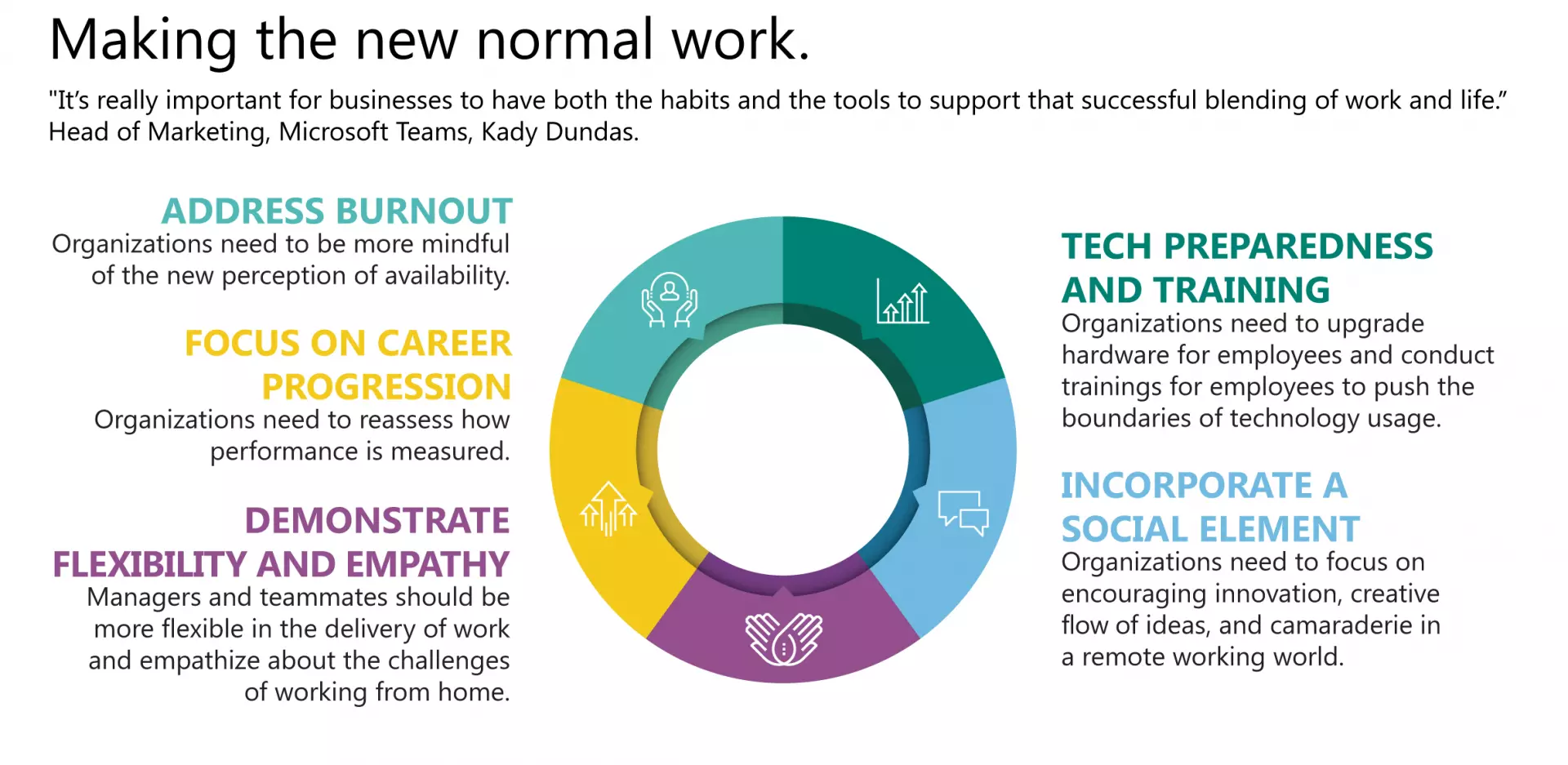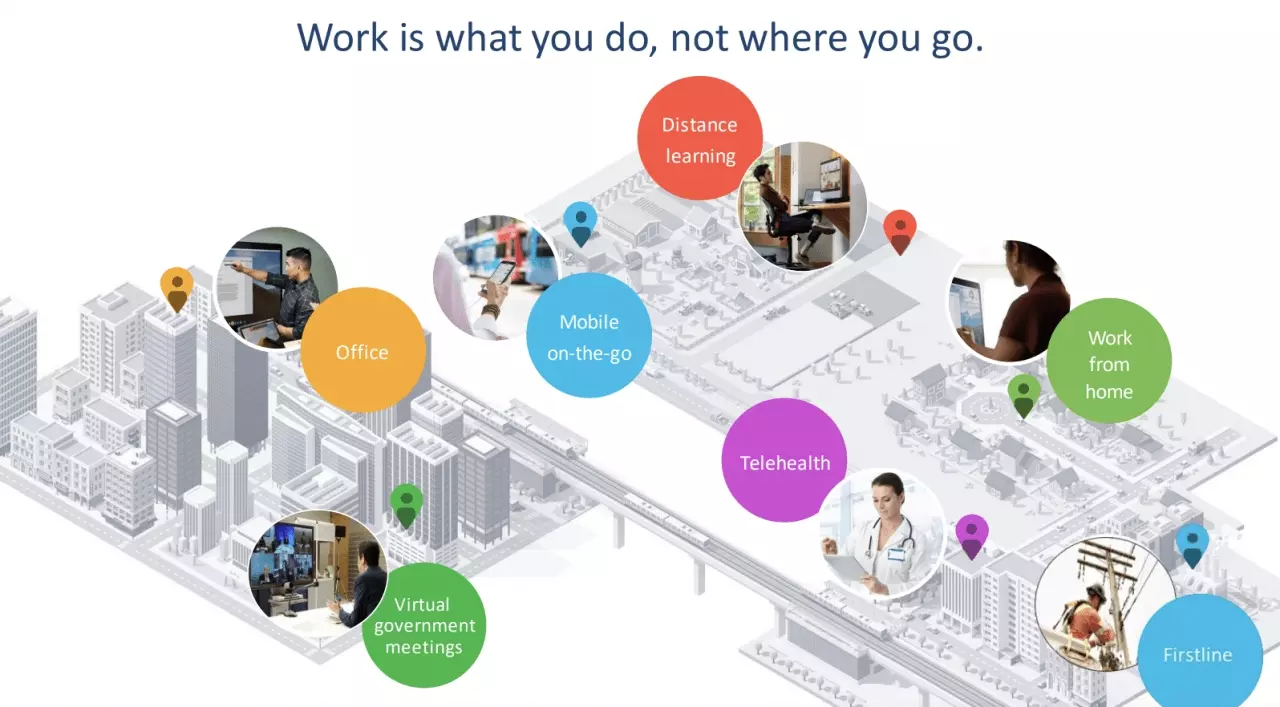Comments
- No comments found

Businesses have adopted new ways of working in the 21st century. Employees have gained experience working remotely during the pandemic.
Several companies have elected to make this move a permanent feature.

Source: The Verge
Everything from software and tools to modified office space leases to creating corporate policies around the future workplace, just to name a few.
Research is suggesting hybrid work is not only the future; it's what most employees want. In one survey, only 12% of U.S. respondents said they wanted to go back into the office full-time, and nearly half of those would even take a pay cut to be able to work from home.
According to new data from LinkedIn's Glint Unit, the majority of workers (56%) prefer a hybrid working model, allowing them to shuffle between working from home and the office. Comparatively, 31% prefer to be fully remote, and 13% prefer to be onsite.

Source: Microsoft
James Gorman, the Morgan Stanley CEO, has doubled down on his stance against working from home by saying, "I fundamentally believe the way you and I develop our career is by being mentored and by watching and experiencing the professional skills of those who came before us, You can't do that by sitting at home by yourself, there's a limit to Zoom technology."
Gorman isn't wrong, and many CEOs agree with him and have planned a total return to the office.
While there isn't one correct answer for every company, only time will tell if organizations that demand a return to an office will experience the "great resignation" as research and experts have predicted. In a survey conducted by Apple employees in June, 36.7% of respondents said they were worried they'd have to leave Apple due to the lack of flexibility.
Note: Having had the opportunity to train and coach leaders in all different industries, I don't see the "great resignation" happening because of hybrid work policies, if it happens it will be because people are being overworked.
It's essential to note that hybrid work isn't an option in many industries, to begin with. Manufacturing, construction, or warehouse workers need to be onsite to complete the job, as do most healthcare workers. It's been estimated that remote work is an option for less than half of the U.S. workforce.
However, for those industries where work can be done remotely, managers and executives should be trying to enhance flexibility for team members to maintain job satisfaction and long-term retention. To go a step further, what is most important is for managers to choose leadership because that's what's required in the hybrid world of work. Because choosing to lead is as important as leadership itself.
Choosing to lead is as important as leadership itself.
Unfortunately, we have too many people in positions of authority who aren't choosing leadership.
Hybrid work brings complexities to managers that have rarely been experienced. While it's far from easy to lead a team when everyone is in the same situation, there will undoubtedly be times where half a team is in person, and the other half is remote. Thus causing a more complex and challenging environment to accomplish goals, collaborate effectively, and develop people. As Brian Tracy famously said:
"Flexibility in times of great change is a vital quality of leadership."
Since hybrid work is what most employees want and it's likely here to stay in some form or fashion for years to come. If you are going to choose to lead and not just manage your hybrid team, here are a few best practices to help you:

Source: Quocirca
Everyone's situation and how they work best won't be the same. To pass judgment on employees for being lazy because they don't want to return to the office full time is awful leadership. Some people have fallen in love with not sitting in the car for 2+ hours a day, grabbing a quick home workout during a break, or interacting with their family more. Reject the temptation to judge employees who are highly successful working remotely who prefer to keep scheduling flexibility.
To pass judgment on employees for being lazy because they don't want to return to the office full time is awful leadership.
Instead, embrace empathy and cloud technology. Put yourself in your teammate's shoes and act differently because of it. Suppose traffic and commute are a problem, schedule critical meetings mid-day to allow team members to come into the office after rush hour. If culture and teamwork are an issue, schedule an offsite at a destination hotel to reconnect the team and strengthen relationships. The point is to know your people and devise a strategy that allows them to maintain the flexibility that they have come to love.

Source: Futurum Research
A standard is defining what good looks like. From all of our research in studying what the best leaders do in Building the Best, it's clear:
Managers define what good looks like; leaders define what great looks like.
It will be tempting to lower the standards since the team will be in and out of the office. I urge you to reject this temptation and instead maintain or even raise the standard.
An example of an excellent hybrid work standards includes; a standing weekly team meeting where everyone is an active participant, a bi-weekly one-on-one meeting with every team member to focus on growth and development, and a biannual in-person meeting to focus on skill development, strategy, and alignment.

Since so much work is about outcomes, leaders need to make a dedicated effort to embrace technology, coach and develop their people. The word coach comes from "carriage," which means to take someone from where they are today to where they want to go. In Coaching for Excellence, I define it this way:
"Coaching is helping improve current and future performance to reach higher levels of excellence."
Doing this effectively as a manager of a hybrid team is challenging. If you are going to coach your people for development, being present in your interactions is essential. Reject the temptation to multitask and instead lock in and focus on how you can help them develop.
John is the CEO of LearnLoft, author of, F.M.L. Standing Out & Being a Leader and host of the 'Follow My Lead' Podcast. He writes or has been featured on Inc.com, LinkedIn Pulse, TrainingIndustry.com, eLearningIndustry.com, CNBC Money, and more. John completed his education at the University of Maryland College.
Leave your comments
Post comment as a guest